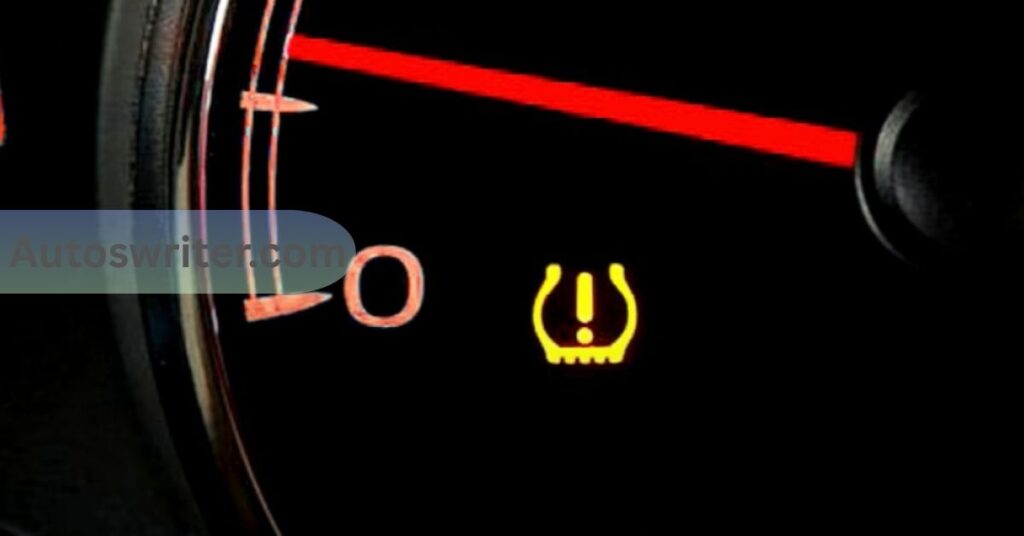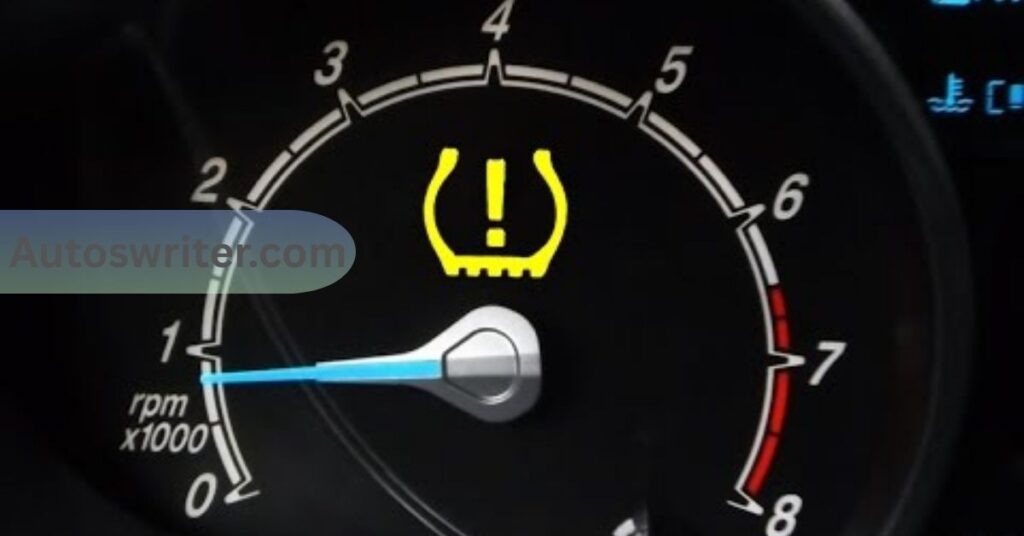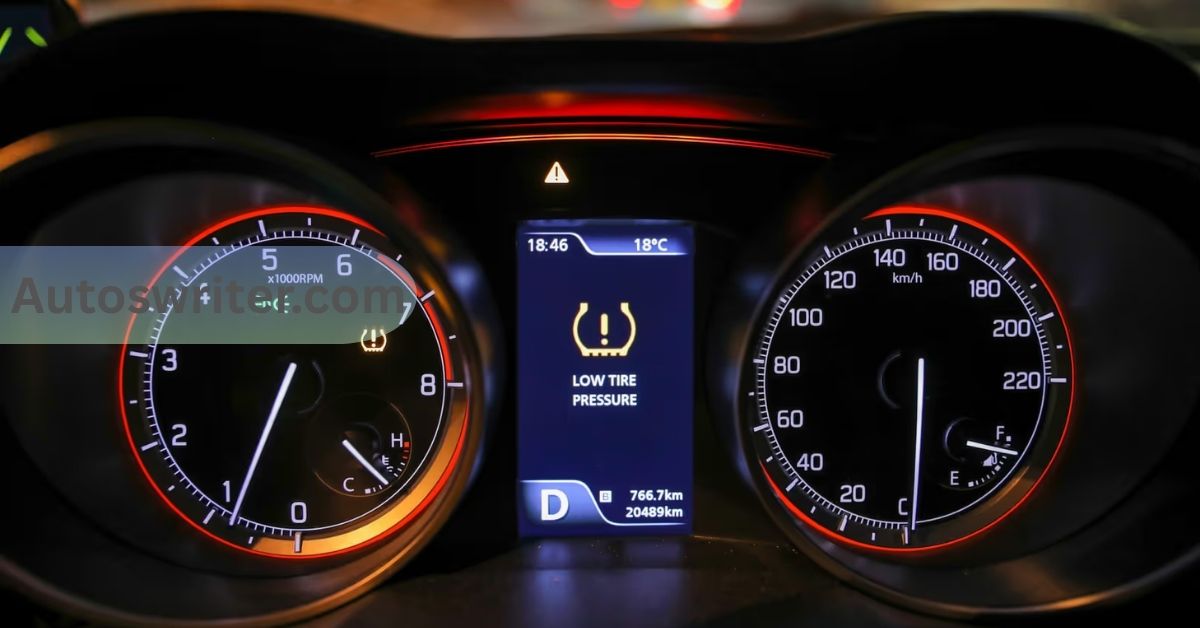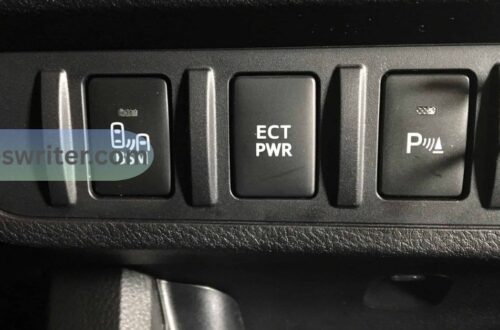If your Toyota’s tire pressure warning light is blinking or flashing, it usually means a problem with the Tire Pressure Monitoring System (TPMS) itself – not just that a tire is low. A solid light typically means one or more tires have low pressure. But a blinking light means something else is wrong.
If the TPMS light flashes for about a minute or so when you start your car and then stays on, Toyota service techs say it usually means there’s an issue with the TPMS system. In other words, a blinking TPMS light often means a sensor or system fault, not just low air in the tires.
This guide will explain how TPMS works, the common causes of a blinking light in Toyota vehicles, and what you can do to fix or reset it.
What Is TPMS and How Does It Work?
TPMS stands for Tire Pressure Monitoring System. It is a safety feature that watches the air pressure in each tire and alerts you if pressure is low. Each tire has a small sensor—usually near the valve stem or inside the wheel—that keeps track of the air pressure and sends that info to your car’s computer. The pressure is shown in PSI (pounds per square inch), which tells you how much air is in the tire.
When all tires are at the correct PSI (found on your Toyota’s door sticker or manual), the TPMS light stays off. If a tire’s pressure drops too low, the system turns on a steady warning light.
Keeping tires at the correct pressure is very important. Proper pressure helps your tires wear evenly, saves fuel, and keeps you safe while driving. Under-inflated tires can heat up and fail, giving poor gas mileage. The TPMS is a helpful tool but doesn’t replace regular pressure checks with a gauge. Make it a habit to check your tire pressure every month or before hitting the road on a long trip.
Blinking vs. Solid Tire Pressure Light:

A steady (solid) tire pressure light means one or more tires are likely under-inflated. You should stop soon and check the tire pressures with a gauge. If the tire pressure light blinks, it usually means there’s a problem with the TPMS system—not just low tire pressure. It does not mean low air.
For example, Toyota experts note that a blinking TPMS light (flashing for up to 90 seconds on start-up) indicates a sensor or battery issue. Similarly, TPMS specialists say, “The light that flashes for 60–90 seconds and then illuminates solid is signaling that there is a problem with the TPMS system”.
In short:
- A solid light means at least one of your tires is airless. Check them all and fill them to the recommended pressure.
- Blinking (Flashing) Light: A TPMS system fault. The car can’t read the sensors correctly.
If the light flashes briefly when you start the car (as a normal self-check) and then goes out, that is usually normal. But if it blinks longer or then stays on, something needs attention.
Common Causes of a Blinking TPMS Light:
A Toyota’s TPMS light blinks usually means an issue with a sensor or the TPMS unit. Here are common causes:
1. Sensor Battery Failure:
Each TPMS sensor has a tiny battery (often lasting 5–10 years). When the sensor’s battery dies, it can’t send pressure data to the car. The TPMS light will blink because it stops getting a signal from that tire. Over time, sensor batteries naturally run out, and the sensor must be replaced. According to manufacturers, a flashing TPMS light usually means one of the tire sensors has a dead battery.
2. Damaged or Missing Sensor:
The system can’t read that tire if a sensor is cracked, can’t, or falls off. For example, hitting a pothole or curb hard enough can damage a sensor. Also, the light will blink if a sensor is accidentally removed (such as during a tire change) or is never installed (some spare tires have no sensor). In short, the TPMS light flashes when “one or more of the sensors are not communicating with the vehicle.”
3. Incorrect or Mismatched Sensor:
Using the wrong type of TPMS sensor (one not programmed for your Toyota) can cause errors. For instance, some aftermarket wheels or tire shops might install a non-OEM sensor. If the car doesn’t recognize a sensor’s signal, the TPMS light can blink. Technical sources note that a flashing light can mean “an incorrect sensor is installed in the tire.”
4. Tire Changes or Rotation Without Reset:
If you have just rotated your tires or installed new tires/wheels, the car’s computer may need to relearn where each sensor is located. Many Toyotas automatically relearn when you drive, but some require a manual reset. If the car has not been appropriately relearned, it might not match the sensors to the right tire and could blink. In practice, always reset or relearn the TPMS after the tire service.
5. Cold Weather and Pressure Fluctuation:
Cold air contracts and lowers tire pressure, making the TPMS light go on if pressure drops below the threshold. Usually, this causes a solid light to go off as the tires warm up. However, sudden temperature swings might make the light flicker briefly.
For example, a Toyota blog explains that temperature changes can cause the pressure to drop enough for the TPMS light to turn on and off. If it flashes on and off quickly due to cold mornings, it’s usually not as serious. Still, you should check the tire PSI and inflate to spec if needed. (Once the tires heat up, the steady light typically goes out if pressure is fixed.)
6. Electrical or Signal Interference (Rare):
TPMS sensors use radio signals, so extreme interference (for example, radio equipment or powerful electromagnetic sources) could confuse them. Also, if another vehicle with a TPMS system is very close during a reset, their signals can interfere.
This is uncommon but can cause the TPMS to “see” “the wrong data. One bulletin warns that if a TPMS learning process is done near another car’s TPMS, it can cause errors. (This is a rare cause, but worth mentioning if nothing else explains the blink.)
Each of these issues can cause the TPMS light to blink. The key point is that a blinking TPMS light means the system isn’t reliably reading a tire’s pressure, often due to a sensor problem.
Also Read: How to Program Toyota Key Fob-Step by Step Guide for Owners
How to Troubleshoot or Reset the TPMS Light:

If your Toyota’s TPMS light is blinking, follow these steps calmly to fix it:
1. Check Tire Pressures Manually:
Always start by checking each tire with a proper gauge. Park on level ground and check the air pressure when the tires are cold (not driven for a few hours). The correct PSI (pounds per square inch) for your tires is on the driver’s door jamb or in the owner’s manual. Inflate any low tire.
For example, if your tires should be 32 PSI when cold, ensure each reads 32 PSI. This step ensures underinflation isn’t the cause of the light. (Remember, TPMS does not replace regular checks. It’s good to check your tire pressure once a month or before heading out on a long drive.)
2. Address Any Tire Issues:
Suppose you find a tire punctured or leaking; repair or replace it before anything else. Driving on a significantly underinflated tire is unsafe. Only move on to TPMS fixes after all tires are properly inflated and any slow leaks are fixed.
3. Try Resetting the TPMS:
Once pressures are correct, you can reset the TPMS so the system re-calibrates. There are two common ways to do this on Toyota vehicles:
Drive at Highway Speed:
One easy method is to drive your Toyota at about 50 miles per hour for roughly 10 minutes. Once you’ve done that, try turning the car off and starting it again—there’s a good chance the TPMS light will reset on its own. This lets the sensors send their new pressure readings to the car’s computer.
Use the TPMS Reset Button:
Many Toyotas have a TPMS reset button under the dash, often near or under the steering column. Here to use it:
- Turn the car to On mode without cranking the engine.
- Hold the TPMS reset button until the tire pressure light flashes three times.
- Release the button and then start the car.
- After driving normally for about 20–30 minutes, the TPMS should relearn, and the light should go off.
These steps are commonly given in Toyota service tips. Make sure you do the reset after inflating the tires to the correct PSI. If the light is still on after all that, it might be time for a pro to check it.
4. Use a Manual Relearn (if needed):
If your Toyota has a more manual TPMS learning procedure (some older models do), follow the owner’s manual instructions for TPMS relearning. This might involve hitting each tire valve with a sensor tool or a driving step sequence.
5. Check the Spare Tire (if applicable):
If your Toyota has a full-size spare with a sensor, ensure its pressure is also correct. Some TPMS setups also monitor the spare tire, so it can trigger a blinking warning light if its sensor dies.
The issue is likely resolved if the light stops blinking and turns off after all of the above. However, if the light continues to blink or returns soon after, you likely have a failing sensor or a system fault.
Is It Safe to Drive with a Blinking TPMS Light? What to Do and When to Get Help:
1. Is it safe to drive?
If the TPMS light is blinking but all tires are at the correct pressure, driving in the short term is generally safe. The tires themselves are fine. However, remember that the TPMS won’t be able to warn you about any future low pressure while it is malfunctioning. So, you will need to check tire pressures manually until they are fixed.
2. Do not ignore low tire pressure:
If you discover a very low tire (e.g., one PSI, a flat, or losing air quickly), fix it immediately—even if the light blinks. Driving on a flat or severely underinflated tire is dangerous. Replace or patch the tire and inflate it to the correct PSI before continuing to drive.
3. Professional service:
Since a blinking TPMS light means the system has a fault, you should plan to have it checked soon. A Toyota technician or tire shop can diagnose the exact cause and test each battery and signal. A Toyota service bulletin even advises bringing the car in when the TPMS light flashes so that the TPMS system can be serviced.
4. Sensor replacement:
If a sensor battery has died or a sensor is broken, it usually needs to be replaced. Technicians can program or activate the new sensor to match your car’s TPMS. If the wrong sensor causes the blinking, as some sources suggest, they can replace it with the correct one.
5. Avoid risky recommendations:
Never ignore a blinking TPMS light indefinitely. It’s not like a standard bulb you can drive with—it means the safety system isn’t ready. While you can drive with the tires at the correct pressure, you should fix the system so you get warnings in the future.
In short, check your tire pressures right away if the light blinks. If all tires are okay, but the light still won’t reset, have your Toyota checked? Properly inflated tires help keep you safe while driving and save you money on fuel. Until the TPMS is fixed, be extra careful and regularly watch your tire pressures.
Also Read: Toyota RAV4 deliveries hit a new record in July-A Complete Guide
Key Takeaways About TPMS:

- TPMS Basics: TPMS stands for Tire Pressure Monitoring System. It uses sensors in each tire to watch the air pressure (in PSI). Proper tire pressure keeps your Toyota safe and efficient.
- Blinking vs Solid Light: A steady tire light = low tire pressure. A blinking light = TPMS malfunction (sensor or system fault).
- Common Causes: If it’s blinking, it usually means the sensor battery is dead, the sensor is missing or broken, or there’s a system error. It’s not generally just regular low-pressure.
- Troubleshooting: Always check and inflate tires first. Then, try resetting the system by driving at speed or using the TPMS reset button.
- Safety: You can drive with properly inflated tires even if the TPMS light blinks, but it will not warn you of future low pressure. Do not drive on a known flat or very low tire. See a mechanic soon if the blinking continues.
- Professional Help: Bring the car in if the TPMS light blinks after you’ve checked the tires and tried a reset. A blinking TPMS light means the TPMS isn’t working and needs service.
By following these steps and understanding why the light is blinking, you can keep your Toyota safe and ensure your tire pressure monitoring system works correctly.
Sources:
Toyota service guides and automotive experts explain that a blinking TPMS light indicates a sensor or TPMS fault. They recommend checking tire pressure, resetting the system, and seeking professional service if the light doesn’t clear. These steps ensure your TPMS will warn you about low pressure again, keeping you safe on the road.
Frequently Asked Questions:
Q1. Why is my Toyota tire pressure light flashing when my tires seem fine?
A blinking light usually means a fault in the TPMS system — such as a dead sensor battery, damaged sensor, or signal issue — not necessarily that your tires are low. Still, you should manually check all tire pressures to confirm.
Q2. How long can I drive with a blinking tire pressure light?
If your tires are all at the correct pressure, you can drive safely in the short term. However, since the TPMS isn’t working, you won’t be alerted if pressure drops later. It’s best to get the system checked and repaired soon.
Q3. Can cold weather cause the TPMS light to blink?
Cold weather usually causes a solid TPMS light due to pressure drops. A system error more likely causes a blinking light. However, large temperature swings confuse the system. Always verify pressure with a gauge.
Q4. How much does fixing a TPMS sensor on a Toyota cost?
Replacing a TPMS sensor typically costs between $50 and $150 per sensor, including labor. The exact price depends on your Toyota model and whether you choose OEM or aftermarket parts.
Q5. Does my Toyota spare tire have a TPMS sensor?
Some Toyota models also have a full-size spare tire equipped with a TPMS sensor. If the spare is underinflated or has a dead sensor, it can trigger the TPMS warning light. Check your owner’s manual to confirm.
Q6. Where is the TPMS reset button on a Toyota?
The TPMS reset button is often under the dashboard near the steering column. Check your owner’s manual for your specific model’s exact location and instructions.
Conclusion:
A blinking tire pressure light in your Toyota isn’t just a casual warning — it’s your vehicle telling you that the TPMS isn’t functioning correctly. While it doesn’t always mean danger is imminent, you won’t be alerted to low tire pressure if it happens later.
That’s why it’s crucial to check your tire pressures manually as soon as the light starts flashing. Try resetting the system once you’ve confirmed your tires are properly inflated.
If the blinking continues, a sensor is likely dead or malfunctioning, and it’s time to consult a professional. Driving with the correct tire pressure is safe even if the TPMS isn’t working, but don’t make it a habit — restoring your TPMS ensures your Toyota can keep protecting you down the road.



